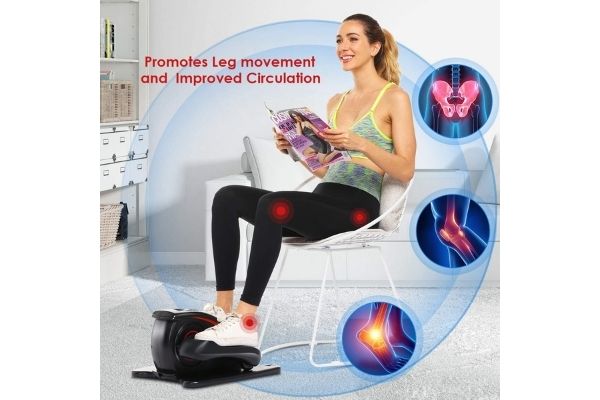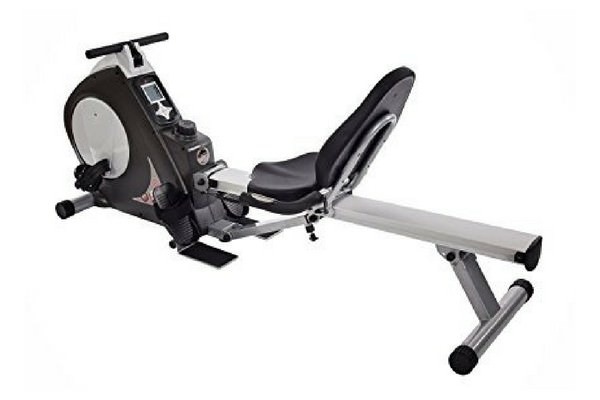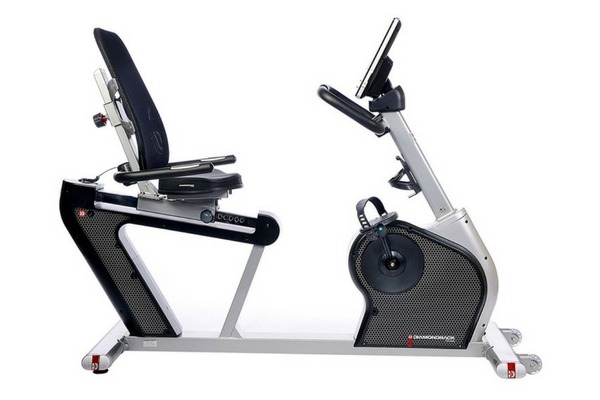Now Reading: Adaptive Exercise Bikes: A Comprehensive Guide for People with Disabilities
- 01
Adaptive Exercise Bikes: A Comprehensive Guide for People with Disabilities

Adaptive Exercise Bikes: A Comprehensive Guide for People with Disabilities
Introduction
Staying active is crucial for everyone, including individuals with disabilities. Adaptive exercise bikes offer an excellent way to engage in physical activity, regardless of one’s physical limitations. These specially designed bikes provide numerous benefits from enhancing cardiovascular health to improving muscle strength and joint mobility. This guide delves into the different types of adaptive exercise bikes, key features to consider, and how to choose the right one for your needs.
Regular exercise contributes significantly to overall well-being, offering physical and mental benefits. Adaptive exercise bikes represent an essential tool in bridging the gap for those with disabilities, providing safe, effective, and enjoyable ways to stay fit. The growing popularity of adaptive exercise equipment underscores a broader recognition of the importance of inclusive fitness solutions.
Types of Adaptive Exercise Bikes
Motorized Exercise Bikes
Motorized exercise bikes feature engines that assist with pedaling, making them suitable for individuals with limited strength or mobility. These bikes allow users to control speed and resistance, offering a customizable workout experience. Benefits include improved cardiovascular health and muscle endurance with minimal strain.
Motorized bikes often include features such as pre-programmed exercise routines, heart rate monitors, and advanced Display Panels to track workout progress. These enhancements make them not only accessible but also highly effective tools for achieving fitness goals. The ability to adjust resistance and speed levels in real-time caters to the unique needs of each user, promoting consistent health improvement without undue stress.
Manual Stationary Bikes with Adaptive Features
Manual stationary bikes can be modified with adaptive features such as adjusted seating, support mechanisms, and stability enhancements. These bikes are ideal for those who can pedal independently but require additional support.
Adaptive features may include extended pedals for those with limited leg movement, hand cranks for arm cycling, and various types of specialized seats that provide additional support. These customizations ensure that users can exercise comfortably and safely, promoting longer and more effective workout sessions. The versatility of manual bikes makes them a popular choice in therapeutic settings where individuals’ needs can vary widely.
Wheelchair-Compatible Exercise Bikes
These bikes are designed for users who remain in their wheelchairs while exercising. They feature roll-up accessibility, transfer systems, and various safety mechanisms to ensure secure and effective workouts.
Wheelchair-compatible bikes offer unparalleled convenience, allowing users to engage in regular exercise without the need for complex transfers. Features like secure anchoring systems, upper and lower body workout options, and easy-to-use controls cater specifically to the needs of wheelchair users. This design innovation significantly reduces barriers to regular physical activity, promoting better health outcomes for people with limited mobility.
Key Features to Consider
Accessibility Features
Look for entry and exit assistance, adjustable seats, and support harnesses to ensure the bike meets your needs. Accessibility is a critical aspect of adaptive exercise equipment, as it directly impacts the ease with which users can begin and end their workouts.
Additional aids such as side handles, non-slip foot pedals, and step-free designs can further improve accessibility, ensuring that the equipment is user-friendly for individuals with varying levels of mobility.
Safety Components
Ensure your bike has emergency stop mechanisms, balance support systems, and stability features to prevent accidents during workouts. Safety is paramount, especially for users with disabilities who may have compromised balance or coordination.
Other important safety features include padded seats and handles, anti-tip designs, and clearly labeled emergency stop buttons, which collectively provide a secure environment for exercise.
Customization Options
Adjustable resistance levels, programmable settings, and user-specific modifications allow for a tailored exercise experience. Customization can range from simple adjustments like seat height to more complex modifications such as changing resistance modes to match specific rehabilitation plans.
Programmable settings might include interval training, resistance cycling, and heart rate-based workouts, all designed to meet personalized fitness goals. These features ensure that the bike can grow with the user, adapting to increasing fitness levels or changing therapeutic needs.
Best Models of Motorized Exercise Bikes for Disabled
1. Exerpeutic Motorized Leg and Arm Pedal Exerciser

(Exerpeutic 2000M Motorized Under Desk Exercise Bike)
4.6 out of 5.0 stars
Key Features:
- Motorized assistance for both legs and arms
- Adjustable speed with a remote control
- Compact and portable design
- Ideal for low-impact workouts
- Easy-to-read LED display
The Exerpeutic Motorized Leg and Arm Pedal Exerciser is a versatile piece of equipment that offers motorized assistance, making it suitable for users with varying levels of strength and mobility. The compact design makes it easy to use at home, and its adjustable speed settings provide a customizable workout experience.
2. PhysioPedal® Arm & Leg Pedal Exerciser, Dual Mode, 8 Motorized Speeds

(PhysioPedal® Arm & Leg Pedal Exerciser)
4.8 out of 5.0 stars
Key Features:
- 8 motorized speed options
- Dual-mode functionality for arms and legs
- Adjustable resistance levels
- LED digital display for tracking progress
- Senior-friendly remote control
- Bi-directional pedaling with safety auto-stop
The PhysioPedal® Arm & Leg Pedal Exerciser is designed to provide a low-impact, effective workout for both arms and legs. With its eight motorized speeds and dual-mode functionality, this exerciser can cater to a variety of fitness and rehabilitation needs. The LED digital display tracks progress, and the senior-friendly remote control makes it easy to adjust settings swiftly. Its bi-directional pedaling feature enhances muscle engagement, while the safety auto-stop ensures user safety during workouts.
Medical Benefits
Physical Benefits
Adaptive exercise bikes enhance cardiovascular health, muscle strength, and joint mobility, offering comprehensive physical benefits. Regular use can lead to improved heart health, stronger muscles, and increased joint flexibility, which are particularly beneficial for individuals with limited movement.
Therapeutic Applications
These bikes are invaluable for physical therapy, rehabilitation, and recovery support, helping users regain and maintain physical function. They are often used in clinical settings to aid in the recovery from injuries or surgeries, combining gentle yet effective exercise with therapeutic warm-ups for rehabilitative goals.
Specific therapeutic benefits include reduced muscle atrophy, improved circulation, and decreased pain levels. By regularly using an adaptive exercise bike, users can experience significant improvements in their overall physical health and well-being, facilitating a higher degree of autonomy and quality of life.
Choosing the Right Adaptive Exercise Bike
Assessment Considerations
Assess physical capabilities, medical conditions, and space requirements before selecting an adaptive exercise bike. Consulting with healthcare professionals can provide valuable insights into the best options for individual needs.
In addition to physical assessments, it’s important to consider factors such as ease of use, personal comfort, and the specific features that will benefit the user most effectively. Detailed evaluations can help ensure that the chosen bike meets the therapeutic and fitness goals outlined by healthcare providers.
Budget Planning
Consider insurance coverage options, initial investment, and ongoing maintenance costs to find a bike that fits your budget. Many insurance plans may cover part or all of the cost of adaptive exercise equipment, especially if it’s prescribed for rehabilitation or therapeutic purposes.
Additionally, budget planning should account for the costs associated with upkeep and potential upgrades to maintain the bike’s functionality and support long-term use.
Setting Up Your Exercise Space
Space Requirements
Ensure minimum dimensions are met for safe and effective workouts. Prioritize accessibility and safety clearance when setting up your exercise space.
Creating a dedicated space for exercise can help avoid interruptions and accidents. Depending on the bike’s size and user’s mobility needs, the area should allow for comfortable movement and transfers, and have space for additional support equipment.
Support Equipment
Include transfer aids, safety mats, and additional adaptive tools to create a supportive workout environment. Transfer aids can facilitate easy movement to and from the exercise bike, while safety mats can protect against injuries in case of falls.
Other adaptive tools might include specific grips for stability, specialized clothing for comfort during exercise, and monitoring devices to track progress. These enhancements ensure a holistic approach to fitness, encompassing both the exercise process and the safety and comfort of the users.
Exercise Programs and Routines
Getting Started
Begin with an initial assessment, proper positioning, and basic exercises to build a foundation. Understanding the user’s starting point is crucial for a safe and effective workout regimen.
Start with low-intensity workouts, gradually increasing the duration and intensity as strength and endurance build. Proper guidance from fitness professionals can help establish a routine that is tailored to individual needs, enabling steady progress.
Progressive Training
Increase endurance, difficulty, and set goals to continuously improve your fitness level. Structured progression ensures that workouts remain challenging but achievable, promoting sustained engagement and improvement.
Progressive training might involve varying workout routines to target different muscle groups, incorporating interval training, or steadily increasing resistance levels to build strength. Setting clear, achievable goals helps maintain motivation and track improvements over time.
Monitoring Progress
Track improvements, health markers, and achievement milestones to stay motivated and measure success. Using fitness trackers, journals, or apps can help keep a record of workout sessions and health metrics.
Regular check-ins with healthcare providers or fitness trainers can provide additional insights into progress and areas needing adjustment. Monitoring key health markers such as heart rate, muscle strength, and flexibility can inform ongoing fitness strategies, ensuring that the user’s needs are continuously met.
Maintenance and Care
Regular Maintenance
Perform daily checks, weekly cleanings, and monthly inspections to keep your bike in top condition. Regular maintenance ensures the bike operates smoothly and safely.
Daily checks might include ensuring all parts are securely fastened, wheels and pedals are functioning properly, and electronic displays are working. Weekly cleaning involves wiping down surfaces to remove sweat and dust, while monthly inspections can identify potential issues before they become problematic.
Professional Service
Know when to seek professional maintenance, find qualified technicians, and understand warranty coverage. Professional service may be necessary for more complex repairs or servicing, ensuring the bike remains safe and functional.
Maintaining a relationship with qualified service providers can facilitate timely and effective maintenance, preserving the bike’s longevity and functionality. Understanding the terms of warranty coverage can help manage repair costs and ensure necessary fixes are covered.
Frequently Asked Questions (FAQs)
- What is a motorized exercise bike and how does it differ from a regular stationary bike? Motorized exercise bikes incorporate motors that assist users in pedaling, unlike regular stationary bikes that rely on the user’s strength alone. This assistance can significantly benefit those with limited strength or mobility.
- How much does an adaptive exercise bike cost? Costs vary widely depending on features and brand, generally ranging from a few hundred to several thousand dollars. It’s important to identify the specific needs and match them with the appropriate model and feature set to justify the investment.
- Can someone in a wheelchair use a stationary bike? Yes, there are wheelchair-compatible exercise bikes designed specifically for such use, featuring roll-up accessibility, secure anchoring, and easy-to-operate controls.
- Are motorized exercise bikes covered by insurance? Coverage depends on individual insurance plans; consulting your provider is advisable. Some plans provide full or partial coverage if the bike is deemed medically necessary.
- What safety features should I look for in a handicap exercise bike? Look for emergency stop mechanisms, stable frames, anti-slip designs, and balance support systems. These features ensure that users can exercise safely, reducing the risk of falls or injuries.
- How often should I service my motorized exercise bicycle? Regular service intervals include daily checks, weekly cleanings, and monthly inspections. For professional servicing, follow the recommendations provided by the manufacturer, which typically advise annual check-ups.
- Can I use an adaptive exercise bike for physical therapy? Yes, these bikes are excellent for physical therapy and rehabilitation purposes, supporting recovery and maintaining physical function. They can be customized to meet various therapeutic needs, such as improving strength, flexibility, and cardiovascular health.
- What are the space requirements for a motorized stationary bike? Ensure adequate space for safe use and accessibility, typically a few square feet depending on the model and additional support equipment. The space should allow for easy transfer onto the bike and free movement around it.
- How do I transfer safely from a wheelchair to an exercise bike? Use transfer aids such as transfer boards, grab bars, or assistance from a caregiver to ensure safe transfers. It’s essential to follow proper techniques to avoid falls or injuries during transfer.
- What types of adaptive features are available for different disabilities? Features include adjustable seating, support harnesses, motorized assistance, hand cranks, and stability mechanisms. These adaptations cater to various needs, ensuring a safe and effective workout for different users.
- How long should exercise sessions be for beginners? Begin with shorter sessions, gradually increasing as fitness improves, about 20-30 minutes per session is a good start. It’s essential to listen to the body and adjust the duration and intensity based on feedback and progress.
- What maintenance is required for a motorized exercise cycle? Regular cleaning, inspections, and professional servicing as needed. Keeping the bike clean and well-maintained prevents wear and tear, ensuring it remains safe and functional.
- Can multiple users with different disabilities use the same bike? Many adaptive bikes offer customization options to accommodate various users, including adjustable settings and multiple support features. This flexibility makes them a versatile addition to shared spaces such as rehabilitation centers or homes with multiple users.
- What certifications should I look for when purchasing an adaptive exercise bike? Look for certifications from health and disability organizations ensuring safety and reliability. These certifications indicate that the bike has undergone rigorous testing and meets established safety and performance standards.
- How do I know if a motorized exercise bike is right for me? Assess your physical needs, consult with healthcare providers, and consider budget and space constraints. Trying different models and seeking professional advice can help ensure the chosen bike aligns with individual fitness goals and therapeutic needs.
Conclusion
Choosing the right adaptive exercise bike can significantly impact the quality of life for individuals with disabilities. By considering various types, features, and personal needs, it’s possible to make an informed decision that supports long-term health and fitness goals. Start your journey with adaptive exercise today and experience the numerous benefits it offers. Whether you’re seeking improved cardiovascular health, muscle strength, or overall well-being, an adaptive exercise bike can be a valuable addition to your fitness regimen.













